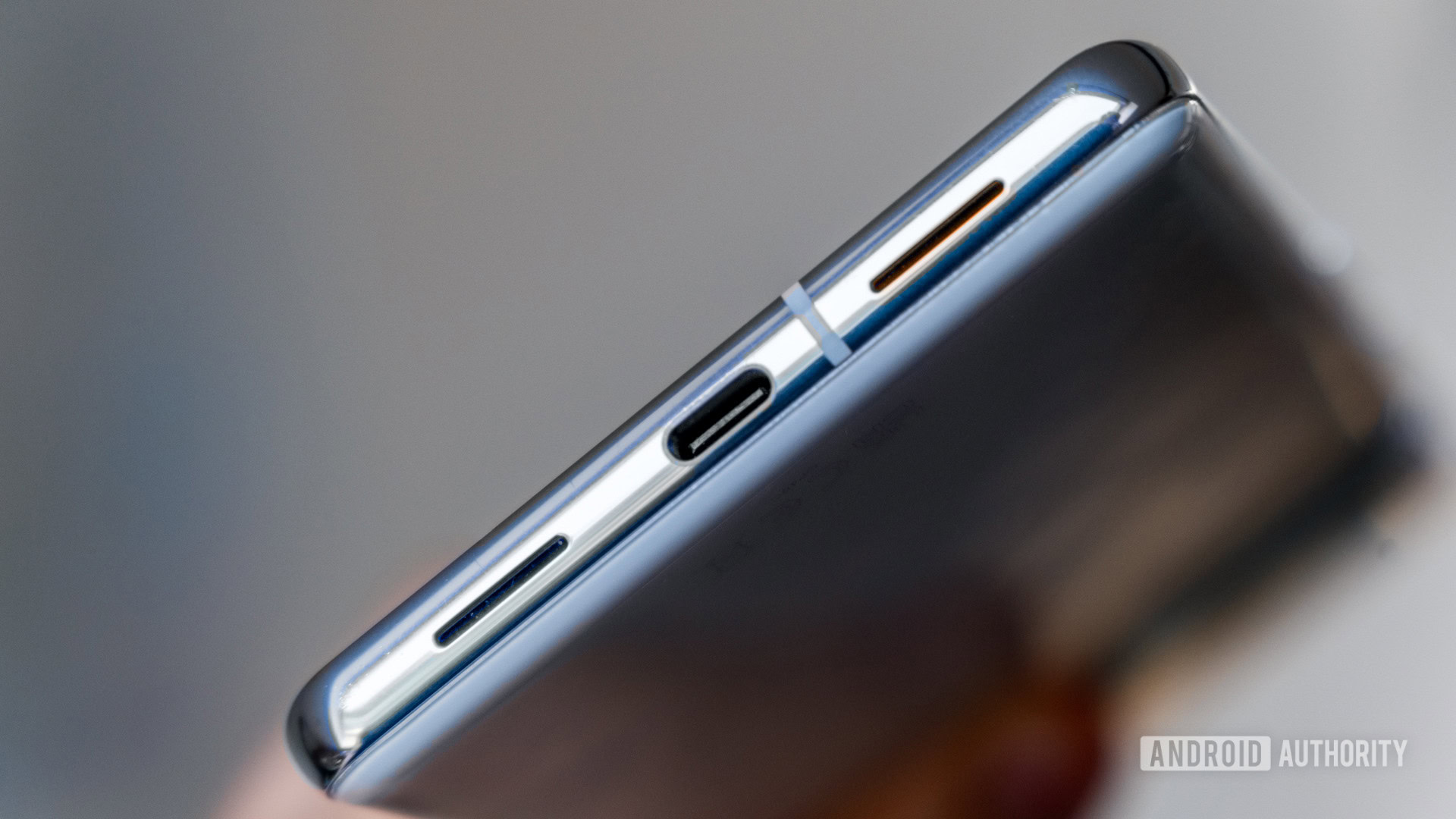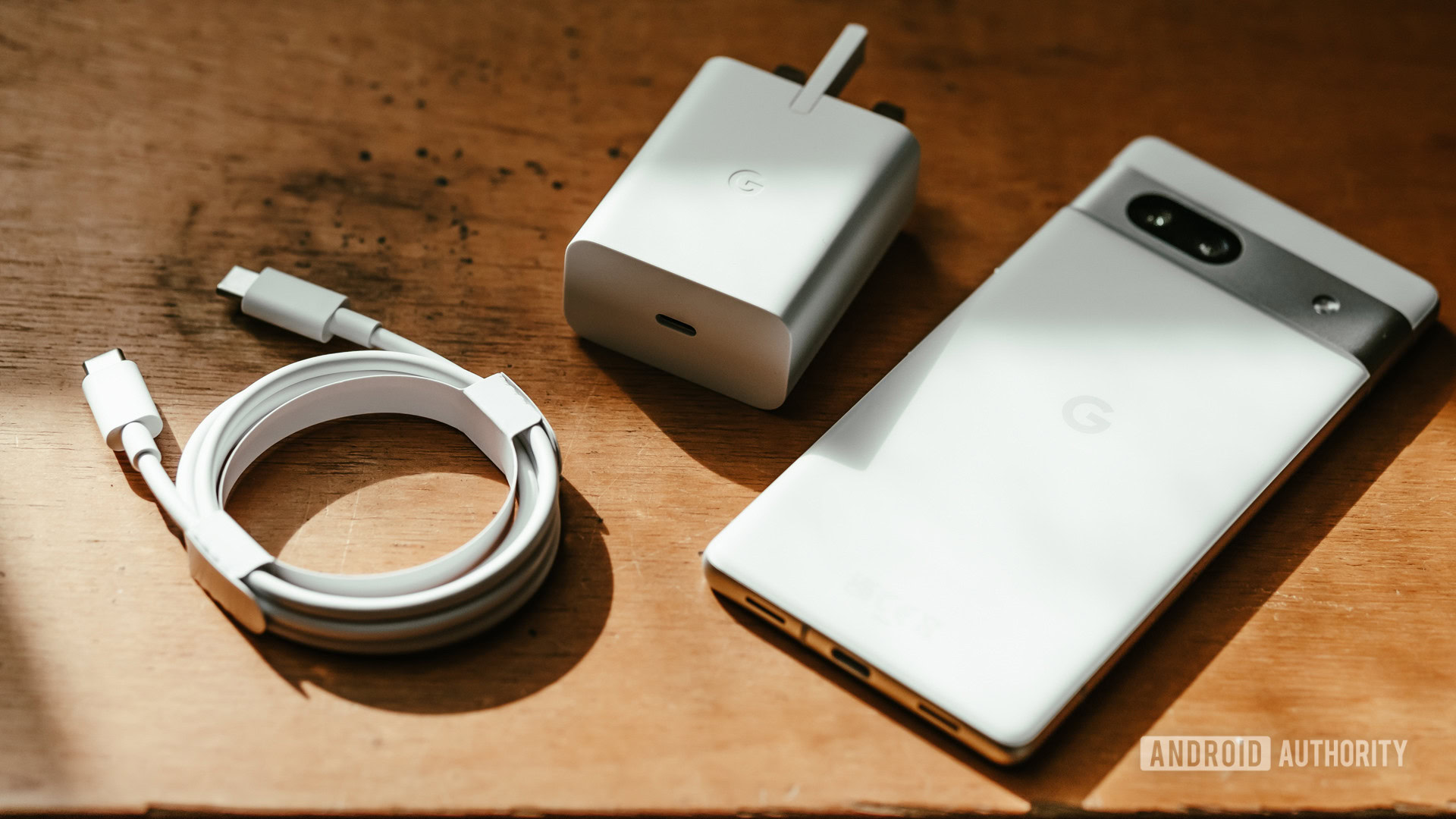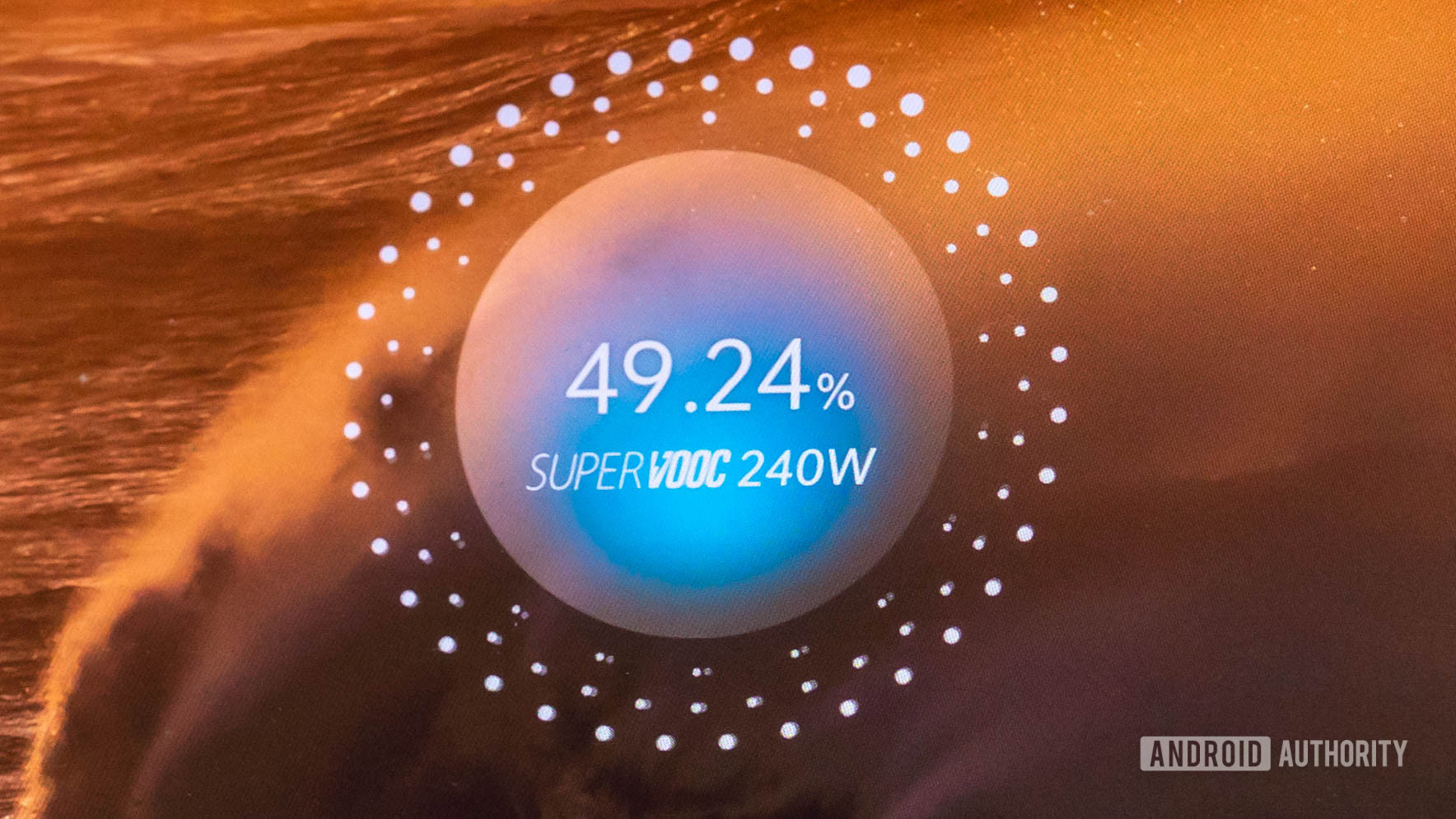Affiliate links on Android Authority may earn us a commission. Learn more.
Why are so many phones doing fast charging wrong?
Published onJuly 8, 2023

Fast charging is the linchpin that helps our phones survive a day of heavy use and keeps them in the game when batteries age and can’t make it through the evening. Yet despite over a decade of development, few, if any, smartphone brands seem to nail the perfect fast-charging formula.
Whether you’re looking at a budget or flagship smartphone, many are either too slow to charge, are limited to proprietary standards, or can’t sustain their peak power capabilities for more than a few minutes without heating up. Surely building a phone capable of doing it all shouldn’t be this difficult?
Big brands but such little power

Take Apple’s iPhone 14 series, for example, which is limited to just 20W of power via the tried and tested but not exactly ultra-modern USB Power Delivery standard. The huge iPhone 14 Pro Max model takes almost two hours to charge the not-especially-large 4,323mAh cell. As much as Apple wants to sell accessories, MagSafe is even more arduous. Despite its other powerhouse specifications, lackluster charging makes it harder to completely recommend the iPhone to power users.
Likewise, Google’s top-of-the-line Pixel 7 Pro caps out at 23W, while the Pixel 7 and Pixel Fold provide up to 21W. Despite embracing the latest charging technology, Google’s implementation has proven to be barely any faster than the brand’s sluggish 18W capabilities. Worse, the Pixel 7a, which still uses the older 18W USB PD standard, seems to overheat and charge even slower.
That leads us to the why. Most likely, these brands are simply playing it safe, using the trusted low and slow method to keep batteries in reasonable shape after many years of use. While unsubstantiated, the theory goes that higher temperatures and more current degrade batteries quicker, especially when using cheaper cells. The big names could certainly offer faster speeds and almost certainly should push the envelope towards a still comparatively conservative 30W. Even if that comes at the cost of marginally bulker and/or more expensive batteries.
Most annoying is that this situation is partly their own making. The lack of readily replaceable batteries has likely pushed Apple and Co into playing it safe with their glued-in batteries. A phone built to last five years has to be much gentler on the battery if it’s hard to replace. Hopefully, moves to enforce repairability will encourage manufacturers to sensibly increase the power they’re willing to supply to smartphone batteries.
If you want fast, go proprietary

On the other hand, Chinese brands have forged ahead with blisteringly powerful 100W, 150W, and 200W power levels. Phones like the Xiaomi 13 Ultra are incredibly fast to charge, taking around just half an hour. These proprietary standards work well because manufacturers can micromanage the battery current and voltage for more optimal charging.
As brands back down on ultra-fast charging, maybe longevity concerns were well-founded.
Faster speeds are excellent, but these standards are far from faultless. For starters, they run hot, which often necessitates throttling back power levels and bulky cooling solutions. As various outings to our test lab have shown, many of these power levels are seldom reached. Even when they are, they’re barely sustained for over a minute, so promises of 100W+ are very rarely realized. As we’ve already discussed, high power and temps also put more stress on a battery, and even the more expensive battery cells can’t quell concerns about longevity.
It’s no surprise that brands like Realme and Xiaomi now lock their fastest charging capabilities behind settings menus, providing users with far more conservative charge times out-of-the-box. Likewise, HONOR backed down on its 100W capabilities this year, offering 66W (45W actual recorded) charging with the Magic 5 Pro. That’s hardly reassuring that these hugely powerful proprietary standards are good for long-term battery health and, marketing aside, leave us to wonder why brands feel these huge numbers are quite so necessary.
Worse, if you end up down the proprietary charging route, you’re often stuck with the bundled charger and brand-specific accessories. Try charging phones like the OnePlus 11 via a USB PD plug, and times plummet to closer to two hours. That’s especially grim if you’re trying to cut down on plug clutter, reduce e-waste, or power up from a fast-charging battery pack.
It's 2023, consumers shouldn't have to sift through spec sheets to know if a plug will work.
As we’ve often opined; consumers shouldn’t have to sift through spec sheets to know if a plug will work. Plug-and-play simplicity is essential. Granted, some brands are better in this regard than others, supporting both proprietary and USB PD protocols with better than basic speeds. But equally, many phones rely almost entirely on proprietary protocols, particularly in the fast-charging mid-tier. And what good is fast charging if you’ve left your proprietary plug at home?
How to do fast charging right

The perfect solution lies in the middle; a universal standard that supports fine-grain power controls for optimal charging. Fortunately, there’s already a solution on the market. Introduced in 2017, the USB Power Delivery PPS specification allows for the same real-time power configuration found in proprietary standards. Unfortunately, the protocol hasn’t quite taken on in the way that it should. Likely because, one, the conservative brands still don’t want to risk higher power levels. Two, why reinvent the wheel if you already have a working proprietary protocol? And three, no one wants to lose out on proprietary aftersales to the competitive, low-cost USB charging market.
30W to 60W, depending on the battery capacity, is all the power you need.
Still, some brands have embraced USB Power Delivery PSS correctly, providing their customers the best of both worlds. ASUS, which bundles the standard under its HyperCharge terminology, provides up to 30W on its littler Zenfone models and 65W in the ROG Phone series. That’s plenty of power, resulting in charge times of just 42 minutes to full for the ROG 7 Ultimate’s 6,000mAh battery, plus full compatibility with third-party charging accessories. Likewise, Samsung hits 45W with its Galaxy S23 Plus and Ultra handsets, charging them to 100% in about an hour. After early generation hiccups, the latest Galaxy phones are better at sustaining that peak power draw too. Unfortunately, Samsung hasn’t brought the same capabilities to its more affordable and smaller phones, but hopefully, that’ll arrive in the coming generation.
While not as fast as the absolute powerhouse charging numbers on the market, 30W to 60W, depending on the battery capacity, is plenty powerful enough for an emergency top-up, provides a reasonable time to full, and doesn’t result in overly hot handsets. Combined with fast charging speeds from battery packs, car chargers, and powering multiple gadgets with just one plug, it’s an obvious win in exchange for a few minutes of charging time.
Fast, universal charging shouldn't be reserved for flagship products.
In addition, these brands implement fast charging toggles that allow users to opt-in and -out of fast charging capabilities. Samsung has three different toggles (including fast wireless charging), depending on the level of power you’re comfortable with, ASUS has its own slow-mode Steady Charging, and other companies provide similar toggles. In addition, ideas like ASUS’ Schedule Charging and Google’s Adaptive Battery to schedule charging overnight provide an extra layer of intelligence and help aid battery longevity. Thankfully many brands implement similar features, but these should all be standard up and down the price ladder too.
What is most important thing about phone charging to you?
There you have it, the ultimate charging package. Power in the region of 30-60W (depending on the battery size) for quick daily top-ups, USB Power Delivery PPS for compatibility with virtually all other USB-C gadgets, and smart overnight charging schedules for those who prefer to juice up overnight. Simple enough. While we’re at it, throw in affordable replaceable batteries so that we can keep smartphones running for five or more years, and we’d have the gadget charging problem completely solved. The first brand to make it so gets my money.
But if I had to recommend a phone for its solid charging capabilities today, you can’t go wrong with the ASUS Zenfone 10 or Samsung Galaxy S23 Plus, and, if you’re in Europe, the HONOR Magic 5 Pro does an OK job at balancing proprietary and universal charging too.